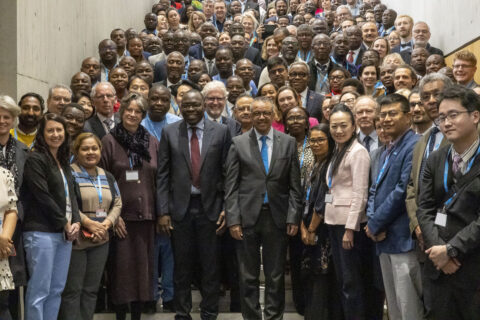
WHO Global Meeting on Skin NTDs
More than 800 people registered for the first WHO global meeting on skin NTDs (Geneva: 27-31 March). 50% listed leprosy as a disease interest, and many ILEP members were represented among the 300+ in-person participants. The number, quality and range of presentations was impressive, and it was no surprise to learn that WHO now intends to hold these meetings every second year. There were half-day sessions on country-level integration; training; surveillance and mapping; disability, rehabilitation, stigma and inclusion; transmission; diagnostics; treatments; and operational research.
WHO will publish a full report in due course, but in the interim we want to give ILEP Update readers a ’taste’ of some of the conclusions and recommendations. Please note that this is not offered as an exhaustive list but simply highlights of key take-home messages.
Overview
- The cost to deliver the WHO NTD Roadmap 2021-2030 is currently unknown. Dr Socé Fall, the new Director of the global WHO NTD Programme, intends to remedy this, to give a focus for potential investors.
- A review of the NTD Department is being undertaken in 2023: ILEP is invited to contribute.
- There was a reminder that ‘cure’ does not occur until disability is managed and there is social inclusion.
WHO regions
- South East Asia region will develop and pilot a regional toolkit for skin NTDs, followed by support for integrated skin NTDs programming at country level from 2025.
- Americas region (PAHO) will design strategies to restore the capacity of leprosy control programs, to close the gap of undiagnosed patients that occurred during Covid.
- Eastern Mediterranean region will mobilise financial resources and staff for intensified disease management in high-burden countries.
- Africa region will strengthen health systems to improve skills in diagnosis, case management and surveillance, and support creation of a special funding mechanism to support NTD Roadmap implementation.
- WHO Global Leprosy Programme will advocate for stronger preventive initiatives at country level, and for focused research into tools for diseases (like leprosy) targeted for elimination.
Topical sessions
Country-level integration:
- WHO is putting attention onto risks in integration (such as loss of disease expertise).
- Work is needed on methods of longer-term impact evaluation.
- Access to NTD medications through national supply chains is still limited in many countries.
Training tools:
- Importance of work currently being done to summarise and review existing training tools.
- Opportunities around mHealth training apps, along with challenges such as connectivity, offline access, and availability in local languages.
- Ongoing need for blended learning involving both e-tools and in-person training.
Mapping and surveillance:
- Periodic mapping should be combined with routine surveillance and training of health personnel in the use of integrated data collection tools.
- Skin NTDs need to be integrated into national surveillance systems, to give better understanding of disease burden, co-endemicity, and how to plan cross-cutting interventions.
Disability, rehabilitation, stigma, mental health and inclusion:
- The millions experiencing life-long consequences of skin NTDs get little attention in most NTD programmes, and services are often fragmented across government departments.
- Person-centred approaches, and co-creation with patient organisations, improve outcomes.
- Operational research is needed to generate better data on these interventions.
- We need to involve other UN agencies working on human rights.
Diagnostics:
- More attention is needed to opportunities for integration at laboratory level.
- New diagnostic approaches involving qPCR and mobile technologies are very promising in ‘bringing the lab to the patient’ (at the point of care).
- Persons living with NTDs can be key players in ensuring that newly available diagnostic tests are actually brought into use.
Treatments:
- Without new effective and safe drugs, the targets of the WHO NTDs Roadmap remain vulnerable.
- Standardised wound care packages show potential, and there are good examples of strong community engagement improving the PHC infrastructure for wound care.
Operational research:
- Implementation research is needed in many NTDs.
- Systems approaches are needed to address the complex problem especially of the non-MDA skin NTDs.
- Interventions can be co-developed with community members and persons affected